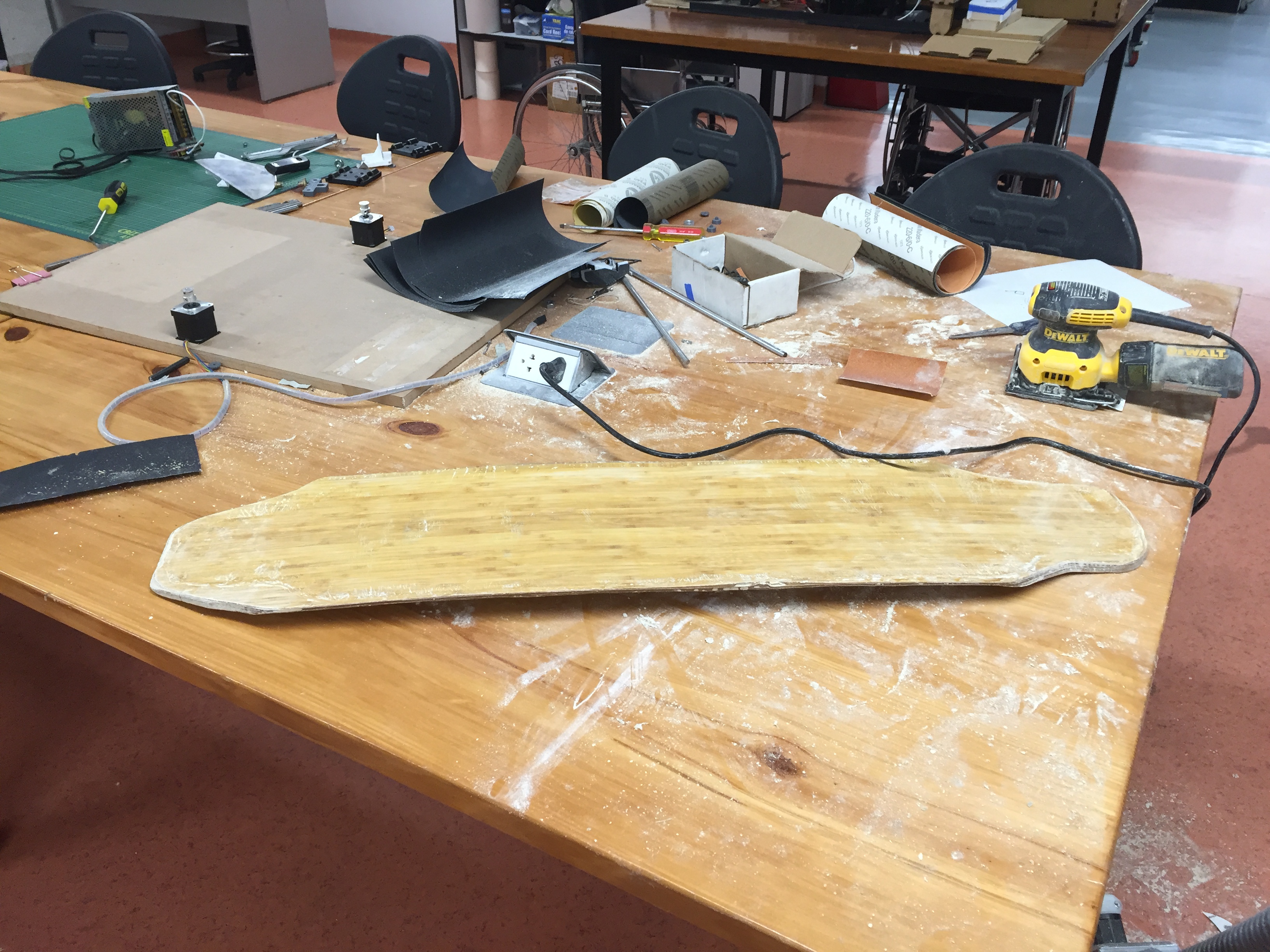
The development of the Longboard, has been very long. Before the FabAcademy, me and a friend of mine, had this idea of building a Longboard that could be basically made in any place with a 3D printer and a CNC machine (Every Fablab), but that could be a bit complicated, so it would be better to buy it to me, or to buy me the parts. We knew that there were a lot of tutorials on internet about how to make a longboard, but we wanted to make a unique one with three important characteristics, the first one is that you can make it in a Fablab, the second one, is that you don't have to buy parts (you can do it yourself), and the third one is that you should be able to control it with your phone or FSRs because the remote control can be expensive.
For the time management, WOW so much things to say!
The first one is to check what materials you already have. If you live in a country as me, where the shipping time are a bit long, you should buy everything as soon as possible to do not waste precious time at the end waiting for products.
But wait ! I made a mistake here because I decided to buy everything without really knowing a lot about BLDs, ESCs or 18650 Batteries...
So please first check my project page and MBoards youtube channel where you will find some more information and probably don't make the same mistake than me.
So now, the second step is to buy your trucks because it is based on them that you are going to be able to make your motor support, and your wheel pulleys in case they came with the truck as in my case.
For the moment, I made everything except the motor pulley. To be honest, this part of the process afraid me a bit because I am not that good designing in 3D and I don't know if mechanically printing in 3D the motor pulley is a good idea because it will have to make enough torque to beat the inertia of the longboard for a person of up to 100kg. The other small thing that I have to do is to laser cut the cover of the case and to ensemble the electronics and test it for the first time. But It is ok because I still have one week to make the motor pulley because I have already make the motor support, the longboard, the electronics, the decoration (vinyl, grip) and the battery. I also think that once the longboard will be ready, I will probably have to adjust the code.
Well everything has worked, for the moment I am controlling the longboard with the app made with Blynk and everything works very well. The motor support has been adjusted many times but I have finally find the correct characteristics.
The control with FSRs didn't worked, it is very complicated because you have to calibrate it for each person because you have a different weight and I should create a calibration process in the app, to see the value sent by the sensor when you are on the longboard and when you are not to be able to know when there is a variation of force. This calibration process, would take me too much time, so I think that for the moment I will use the control with the app Blynk where I can also configure the LEDs colors.
Will the 3D printing motor pulley work or it will be destroy by the torque?
Will the motors be strong enough?
Will the code work?
The motor support will stay firm or it will vibrate?
I will try to make a better version of the longboard that can be 3d printed or milled, publish it in my website and very soon sell those parts or the entire longboard (I would like to use the same strategy than Josef Prusa). But for the moment, the most important is to finish the FabAcademy, and for that it is important to finish my Final Project and all the documentation. For the technical part, I am still testing the bluetooth connexion because most of the longboard use Radio communication and there is probably a reason, I don't think that I would remove the bluetooth connexion, but I could use both, I will test it and decide after one month of testing and modifications of the code.
What I have not learned is probably a better question. The FabAcademy and my final project have been one on the most enriching experience in my life. I have learnt a lot about electronics, 3D designs, materials selection, 2D and 3D milling, Laser and vinyl cutter. I feel like now I am able to build some projects, but most of all, I am ready to learn much more about all those subjects because I have a strong base. I say a strong base because the FabAcademy makes you learn, there is not an easy option and when you really have to learn, you never forget what you have learnt. The last assignments about your business model, have been very interesting because they made me think about my business and now I know that what I want to do is a business very similar to Prusa Research. With that business model, you share knowledge and you create in the users a need for your products because they will want to follow your tutorials. And finally another important think that I have learnt is how important the documentation is because more than one time, I forget the name of the 3D software of the Modela and I had to search the name in my documentation.
Please Contact Me For Any Collaborative Project